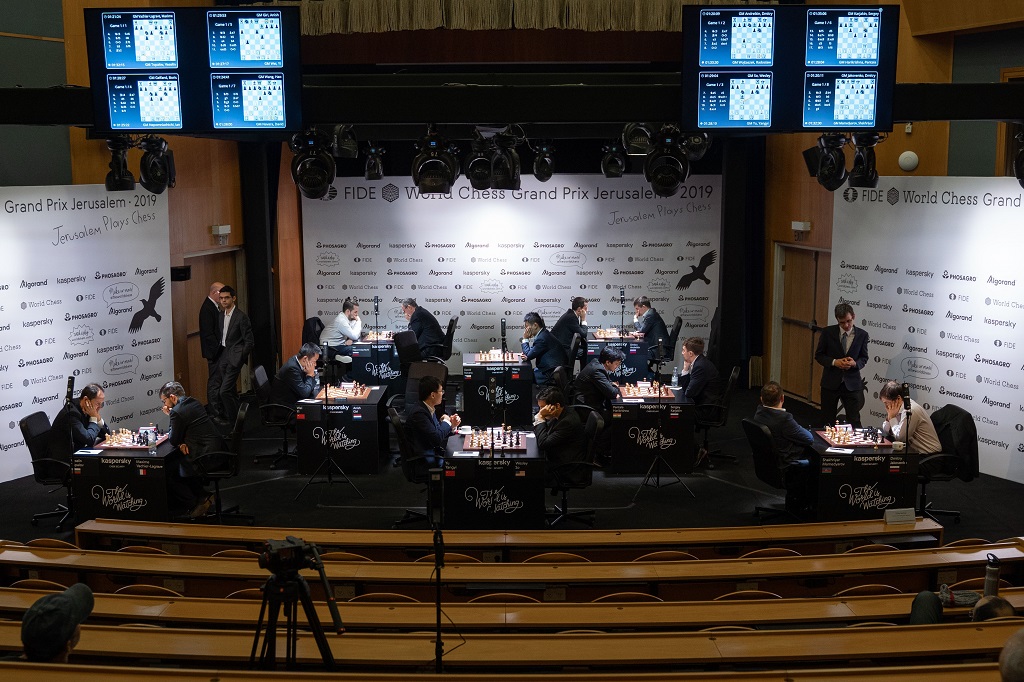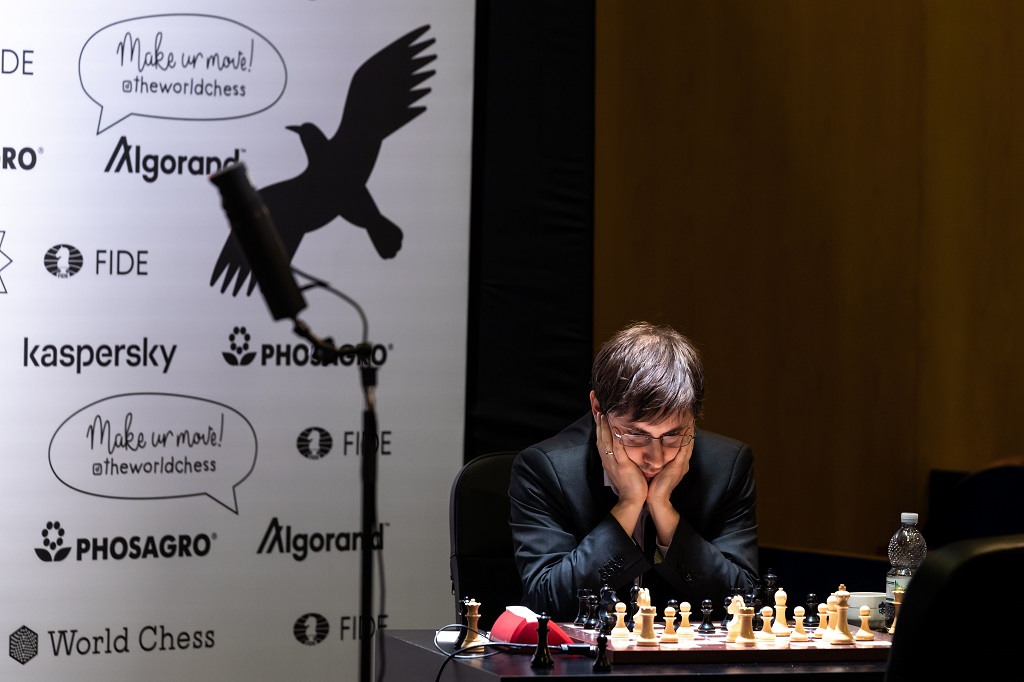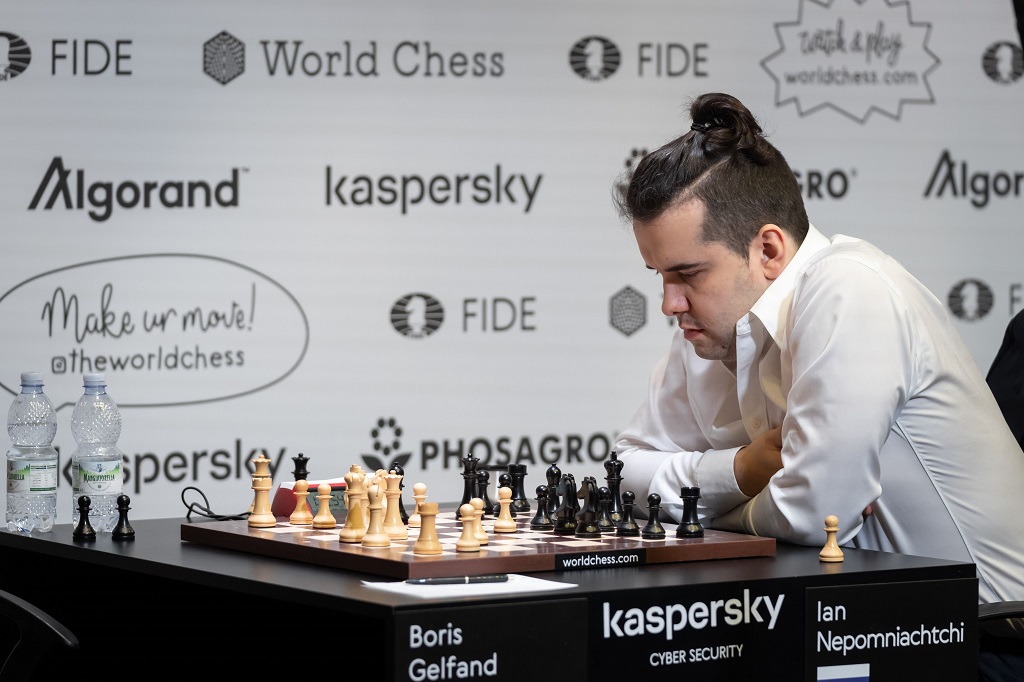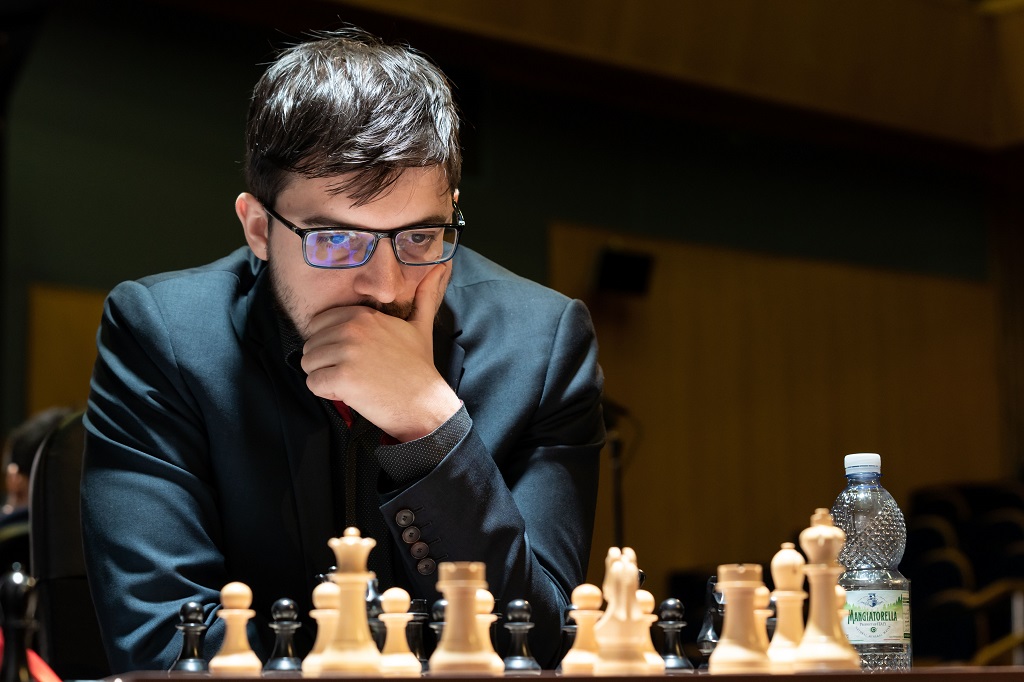


 The fourth leg of the FIDE Grand Prix is being played in Jerusalem, Israel. The 16-player knockout has a €130,000 prize fund, with the series as a whole having an additional prize fund of €280,000 plus two qualifying spots for the 2020 Candidates Tournament. The tournament takes place in the Notre Dame of Jerusalem Centre from December 11th to 23rd.
The fourth leg of the FIDE Grand Prix is being played in Jerusalem, Israel. The 16-player knockout has a €130,000 prize fund, with the series as a whole having an additional prize fund of €280,000 plus two qualifying spots for the 2020 Candidates Tournament. The tournament takes place in the Notre Dame of Jerusalem Centre from December 11th to 23rd.
Seven out of eight round-one matches in Jerusalem will go to tiebreaks, as only one decisive result was seen on the first two days of action. A side effect of this outcome is that Alexander Grischuk is now officially qualified to the 2020 Candidates Tournament. The fact that nor Maxime Vachier-Lagrave nor Shakhriyar Mamedyarov advanced to round two in the classical phase confirmed the Russian's qualification. It is now impossible for two players to overtake him in the overall standings table.
| Name | Moscow | Riga | Hamburg | Jerusalem | Points | |
| 1 | Alexander Grischuk (RUS) | 7 | 3 | 10 | x | 20 |
| 2 | Maxime Vachier-Lagrave (FRA) | x | 8 | 5 | 13 | |
| 3 | Shakhriyar Mamedyarov (AZE) | 0 | 10 | x | 10 | |
| 4 | Ian Nepomniachtchi (RUS) | 9 | x | 0 | 9 |
Full standings table available on Wikipedia
The worst-case scenario for Grischuk would be for Mamedyarov to win in Jerusalem, after beating Vachier-Lagrave in the final — this is a possible outcome, as they are on opposite sides of the bracket. In that case, if Mamedyarov wins the remaining three match-ups without needing tiebreaks, he would get 11 points, while 'MVL' would get 7 (again, if he wins rounds two and three without tiebreaks).
Mamedyarov would then reach 21 points to Vachier-Lagrave's 20. The tie between the French grandmaster and Grischuk would be broken based on the number of first places obtained throughout the year. In that scenario, the Russian would have the edge, as he won in Hamburg while Vachier-Lagrave would not have got any triumphs.

The playing hall in Jerusalem | Photo: Niki Riga
Wesley So showed great form in his win over Yu Yangyi. The American grandmaster comes from scoring a memorable match victory over Magnus Carlsen at the Fischer Random World Championship a month ago and, after Thursday's fine showing, can be labelled as one of the biggest favourites to take first place in Jerusalem.
Out of a Petroff Defence, he showed excellent home preparation and strong calculation skills to outplay his Chinese rival. Yu Yangyi spent more time from the get go and got an inferior position in a middlegame that required utmost precision. Already in the driver's seat, So gave up an exchange to finish off his opponent in style:
The Filipino-born grandmaster confidently played 33.♗xd5, giving up an exchange— 33...♝xd5 34.♕xd5 ♛xd1. He had a killer blow in store:
35.e6 and Black is in deep trouble. The game continued 35...♛c2 36.exf7+ ♚h7, and White threatened mate-in-one with 37.♕e5. The problem for Black is that after 37...♛g6, defending against the mating threat, White has 38.♕e7 and the passed pawn is unstoppable. Black resigned.

The first one in round two — Wesley So | Photo: Niki Riga
Day two of action in Israel could have easily finished with many more decisive results. Shakhriyar Mamedyarov and Ian Nepomniachtchi had clearly inferior positions out of the opening, but Dmitry Jakovenko and Boris Gelfand could not find the critical continuations that would have given them victories. Meanwhile, the other big contender to get the spot in the Candidates, Maxime Vachier-Lagrave, accepted a draw shortly after Veselin Topalov gave up an exchange out of a Berlin Defence. Finally, Dmitry Andreikin and especially David Navara had great winning chances in long-winded endgames, but could not get full points in the end.
Mamedyarov mixed up some lines in the opening and incorrectly captured a 'poisoned pawn' on g2. Jakovenko failed to show the refutation, but quickly got an edge nonetheless. The Russian later missed a straightforward shot:
The black knight on h4 is awkwardly placed, which quickly prompts us to analyse the correct 27.♘e5, taking away the g6-square for the vulnerable piece while also threatening to capture on c6, getting a strong passer on the d-file. Jakovenko instead opted for 27.♔g3 and, although White is still in the driver's seat, Mamedyarov managed to wiggle out and remain in contention with a 34-move draw.

Dmitry Jakovenko missed a big chance on Thursday | Photo: Niki Riga
Nepomniachtchi also played a wrong move in the opening (10...♝d7) and found himself in dire straits against Gelfand. The Israeli gave up a pawn to get a strong initiative against Black's uncastled king. The biggest chance missed by the veteran grandmaster was seen on move 23:
Gelfand immediately captured the f5-knight with 23.♘xf5, when 23.♕b2 was a killer blow — the kind that engines find more quickly than humans, though. Evgeny Tomashevsky joined Evgeny Miroshnichenko as a guest in the commentary booth and showed the following line as an illustration of how strong the queen transfer was: 23...♞d3 24.♕c3 ♞xb4 25.♘xf5 exf5 26.♖xf5 and Black cannot defend f7 without giving up abounding material.
Much like Jakovenko, Gelfand still had the upper hand but could not break his opponent's defences in the long run.

Ian Nepomniachtchi saved a half point after an opening mishap | Photo: Niki Riga
The ever-combative Veselin Topalov sacrificed an exchange to create imbalances in his game with Black against Vachier-Lagrave:
Topalov knew that after 20...♜h4 he would need to lose an exchange in the sequence 21.♘f5 ♜xg4+ 22.♔f3 ♜h4 23.♘xh4 ♞xh4+. Nevertheless, instead of fighting to make the most of his material edge, 'MVL' agreed to a draw a couple of moves later.
Tomashevsky gave valuable insights into why the Frenchman made that decision, explaining that he probably never felt in control of the game, as his opponent called all the shots, including the exchange sacrifice. The Russian added that it made sense for Vachier-Lagrave not to go for an entangled struggle against "the famous master of complications", especially in sight of the fact that he is a big favourite in the rapid and blitz tiebreakers.

Maxime Vachier-Lagrave | Photo: Niki Riga
Click or tap a game from the list to switch
Official broadcast with GM Evgeny Miroshnichenko via worldchess.com